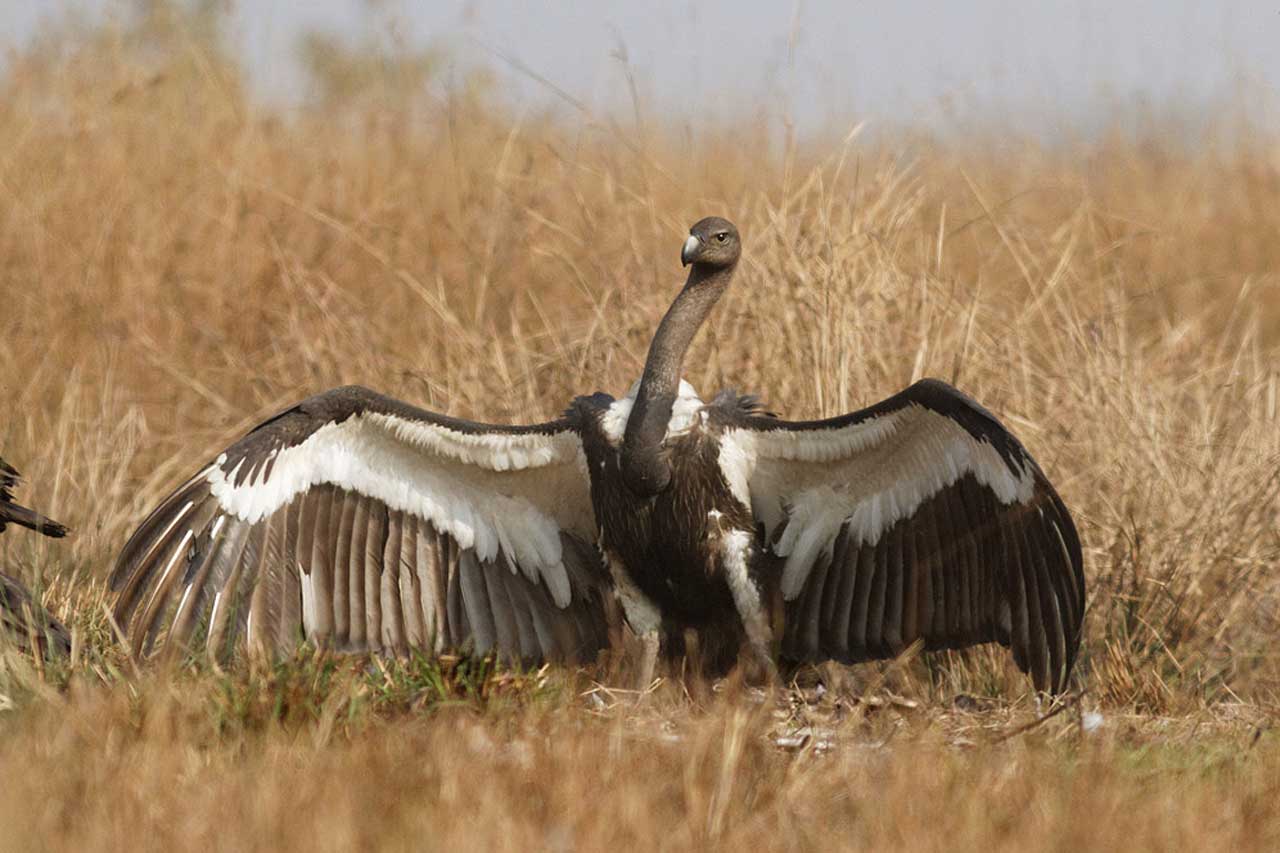

This species is known to show partial migration that ranges from 1000-2000 square kilometres and sometimes across the borders between Nepal and India ( Clements et al. Pairs are monogamous, raise one nestling per year, the incubation period is approximately 50-56 days, the nestling period lasts approximately 104 days (Gillbert et al.

White-rumped Vulture is the smallest among Gyps species, feed exclusively on carrion, they are gregarious and social, they forage in flocks, roost and nest in colonies ( Sharma 1970). White-rumped Vulture is one of four Critically Endangered species of vultures in India, others are Indian Long-billed Vulture, Slender-billed Vulture Red-headed Vulture ( Prakash 1999, Green et al. Later it was discovered, a non-steroidal anti-inflammatory drug (NSAID): diclofenac was the main causative factor for rapid population decline across the Indian subcontinent ( Oaks et al. Various hypotheses were put forward to investigate the cause for this rapid decline ( Pain et al. The evidence of catastrophic decline reported during the late 1990’s from Keoladeo National park, Rajasthan ( Prakash 1999). 30 years ago, the vulture population in Northern-Central India, appeared to be highest in urban areas ( Galushin 1971). Of these, eight species of vultures are reported from Himachal Pradesh: Gyps bengalensis White-rumped Vulture, Gyps himalayensis Himalayan Griffon Gyps fulvus Eurasian Griffon, Gypaetus barbatu Lammergeyer, Gyps indicus Indian Long-Billed Vulture, Aegypius monachu Cinereous Vulture, Neophron percnopterus Egyptian Vulture, and Sarcogyps calvus Red Headed Vulture ( Puri et al. In India, 106 Raptor species are found which makes 18 percent of 572 species that are spread all over the world (Ali et al. High congregration of active nests within short radial distance from feeding station, signify the positive impact of management of feeding station by the wildlife wing of Forest department since 2008, for the ex-situ conservation of critically endangered Gyps bengalensis White-rumped VultureĪmong 23 species of vultures, 12 species are currently classified as “Near Threatened” or “Endangered” (IUCN 2017). We also found that, 71% (n = 17) nesting sites located within radial distance of 20 km of the feeding station. We found, vulture prefer single tree species for nesting.

From the 24 nesting sites, 352 active nests were recorded, and a significant Pearson’s correlation for elevation and aspect were drawn. Aerial distance was used to determine the role of feeding station for selecting the nesting sites. Simultaneously, different variables (tree height, tree species, elevation and aspect) were recorded for each nest. Nest counts were conducted during the breeding period, each nest was categorized into active and inactive nest based on assesment of different components. Active nests of Gyps bengalensis White-rumped Vulture depends on elevation and aspects for nest site selection, while feeding station plays a significant role for determining the position of the nesting sites.This study attempted to record nest count for the breeding period 2018, identify key variables for the nest site selection and understand the role of feeding station in the nest site selection.


 0 kommentar(er)
0 kommentar(er)
